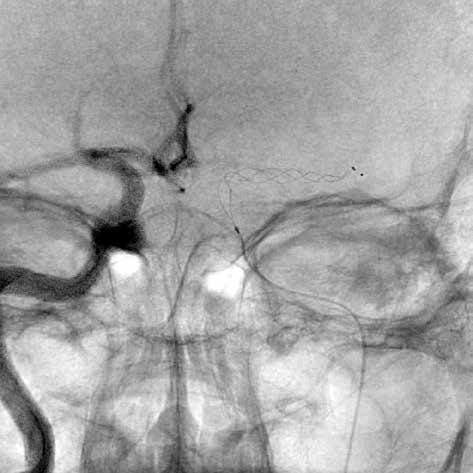Abstract
Introduction: Cerebrovascular events are among the most common causes of invalidity or death. The aim of treatment in acute cerebral ischemia is to restore the blood flow before irreversible necrosis of brain tissue and persistent neurologic deficit occur. Pharmacological, endovascular and surgical methods are employed in the treatment of these patients.
Case report: The authors present a case report of a 56-year-old woman with acute cerebral ischemia caused by tandem occlusion of the left common carotid artery and the M1 segment of middle cerebral artery. In the initial phase the patient was treated by intravenous thrombolysis with minimal success. Common carotid artery was occluded and mechanical extraction of embolus was successfully performed through direct carotid bifurcation puncture. Almost complete regression of neurologic deficit occurred after the endovascular recanalization. Occluded common carotid stump and bifurcation was considered as a source of embolization and therefore, to prevent further cerebrovascular event, a subclavian-carotid bypass was performed on the 15th day after the stroke.
Conclusion: In the reported patient with symptomatic tandem occlusion of common carotid artery and the M1 part of middle cerebral artery, recanalization of cerebral artery was attained by the combination of pharmacological and endovascular method. Consequent subclavian-to-carotid bypass was performed in tertiary prevention of further cerebrovascular event.


